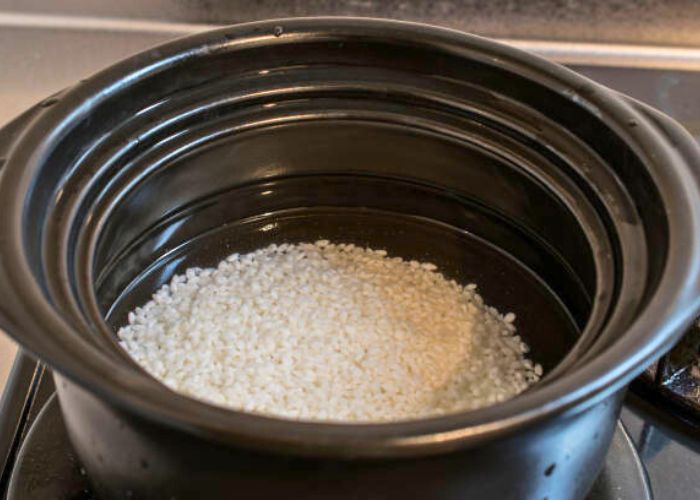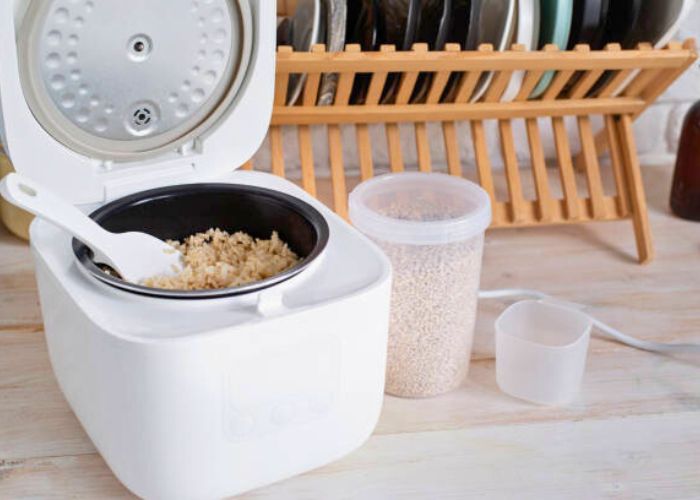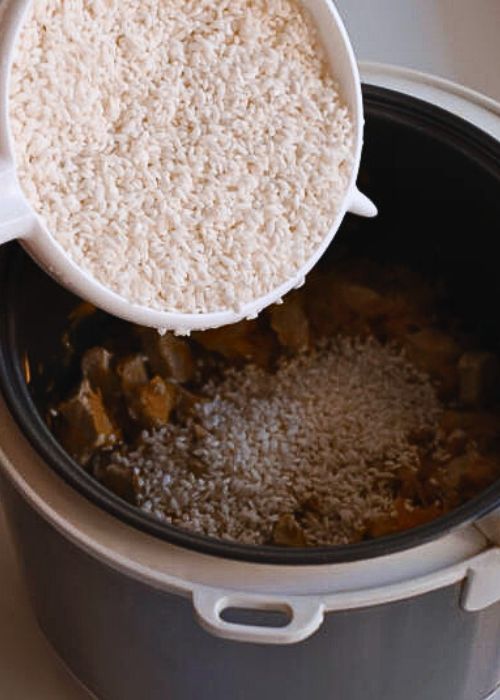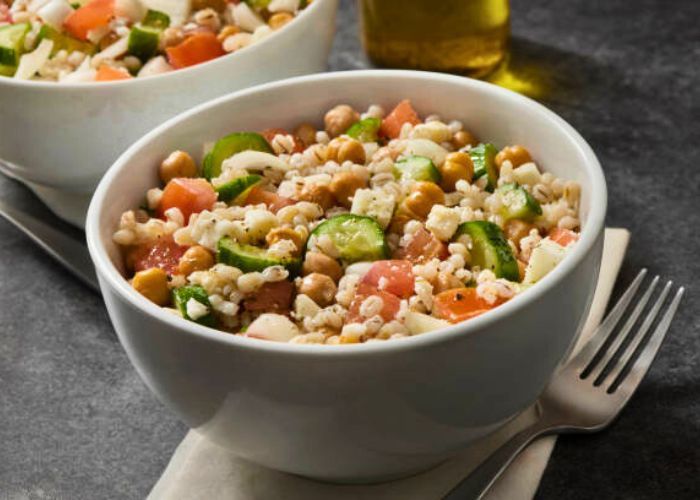As an Amazon Associate, I earn from qualifying purchases
Barley, a versatile and nutritious grain, has been a dietary staple for centuries. Packed with essential nutrients like fiber, vitamins, and minerals, barley offers numerous health benefits, including improved digestion, heart health, and weight management.
While barley is traditionally cooked on the stovetop, using a rice cooker provides a convenient and hassle-free alternative. With the right water-to-barley ratio and cooking settings, a rice cooker can yield perfectly cooked barley every time, saving time and effort in the kitchen.
Achieving the ideal water-to-barley ratio is crucial for cooking barley to perfection in a rice cooker. Too much water can result in mushy barley, while too little water can leave it undercooked. Mastering this ratio ensures fluffy, tender barley grains with optimal texture and flavor.
Preparing Barley for Cooking

Before cooking, it’s essential to rinse the barley under cold water thoroughly. This step helps remove any debris, dust, or residual dirt from the grains, ensuring a clean and hygienic cooking process.
While optional, soaking barley for a few hours or even overnight can significantly reduce its cooking time. Soaking helps soften the grains, leading to faster and more even cooking. Additionally, soaking can enhance the digestibility of barley and improve its nutritional profile.
After soaking, be sure to drain the soaked barley well before cooking. Excess moisture can affect the water-to-barley ratio and lead to inconsistent results. By draining the barley thoroughly, you ensure that the cooking process begins with the correct balance of ingredients, resulting in perfectly cooked grains.
Setting Up the Rice Cooker

Before proceeding, ensure that your rice cooker is clean and in proper working condition. A clean cooker prevents any unwanted flavors or contamination from affecting the barley during the cooking process. Check that the inner pot is free from any residue or debris.
Add the rinsed barley to the rice cooker pot. Spread the barley evenly across the bottom of the pot to promote even cooking. Avoid overcrowding the pot, as this can lead to uneven cooking and clumping of the grains.
Measure the appropriate amount of water based on the desired texture of the cooked barley. The water-to-barley ratio typically ranges from 2:1 to 3:1, depending on whether you prefer chewy or softer barley. Refer to the instructions provided with your rice cooker for specific guidelines on water measurement. Adjust the amount of water according to personal preference and any variations in cooking instructions.
Cooking Process

Once the barley and water are added to the rice cooker pot, securely close the lid to trap steam and facilitate even cooking. Ensure that the lid is properly seated to prevent any steam from escaping during the cooking process.
Select the appropriate cooking setting on your rice cooker. Some models have specific settings for grains like barley or offer a multi-grain option. If your rice cooker doesn’t have a dedicated barley setting, choose a setting suitable for grains or multi-grain cooking.
Start the rice cooker according to the manufacturer’s instructions. Allow the barley to cook undisturbed until it reaches the desired level of tenderness. Avoid opening the lid during the cooking process, as this can disrupt the cooking temperature and prolong the cooking time.
Optionally, after the cooking cycle completes, you can let the barley sit in the rice cooker for a few minutes to steam and fluff up further. This resting period allows any remaining moisture to distribute evenly among the grains, resulting in a more uniform texture. Use a fork to gently fluff the barley before serving.
Checking for Doneness
Carefully open the rice cooker lid and check the barley for tenderness by sampling a few grains. The barley should be tender but still slightly chewy, with no hard or undercooked centers. If the barley is still too firm, it may require additional cooking time.
B. If the barley is not yet fully cooked to your liking, add a small amount of water to the rice cooker and stir gently to distribute evenly. Close the lid and continue cooking for additional time until the desired texture is achieved. Be cautious not to add too much water, as this can lead to overly soft or mushy barley. Adjust the cooking time as needed, checking periodically until the barley reaches the desired consistency.
Serving Suggestions

Once the barley is cooked to perfection, carefully transfer it to a serving dish using a spoon or spatula. Ensure to scrape the sides and bottom of the rice cooker pot to gather all the cooked barley.
Enhance the flavor of the cooked barley by seasoning it with salt, pepper, herbs, or other desired flavorings according to your taste preferences. Consider adding a drizzle of olive oil or a squeeze of lemon juice for added zest.
Serve the cooked barley hot as a delightful side dish alongside your favorite main courses. Alternatively, incorporate it into salads, soups, stews, or other recipes to add texture, nutrition, and a satisfying chewiness. Get creative with your culinary creations, as barley complements a wide range of flavors and ingredients.
Conclusion
In conclusion, mastering the art of cooking barley in a rice cooker opens up a world of culinary possibilities. With its rich nutritional profile and versatility, barley serves as a wholesome addition to any meal. By following the simple steps outlined in this guide, you can effortlessly prepare perfectly cooked barley every time, ensuring a delightful dining experience for you and your loved ones.
From the initial preparation of rinsing and soaking the barley to setting up the rice cooker with the correct water-to-barley ratio, each step is crucial in achieving optimal results. The cooking process itself, facilitated by the rice cooker’s efficiency, yields tender and flavorful barley grains ready to be enjoyed.
Checking for doneness ensures that the barley reaches the ideal texture, while serving suggestions provide endless opportunities to incorporate this nutritious grain into a variety of dishes. Whether served hot as a comforting side dish or integrated into salads, soups, or other recipes, cooked barley adds depth, flavor, and nutritional value to your culinary creations.
So, whether you’re a novice cook looking to expand your repertoire or a seasoned chef seeking convenience without compromising on quality, cooking barley in a rice cooker is a simple yet rewarding endeavor. Embrace the versatility of barley and unleash your creativity in the kitchen, knowing that a delicious and nutritious meal is just a rice cooker away.
FAQ
- Can I cook barley in a rice cooker?
- Yes, absolutely! Cooking barley in a rice cooker is a convenient and efficient method that yields excellent results. Just follow the simple steps outlined in our guide to achieve perfectly cooked barley every time.
- How do I know the barley is done cooking?
- You can check the tenderness of the barley by sampling a few grains. It should be tender. If it’s not fully cooked to your liking, you can add more water and continue cooking until the desired texture is achieved.
- Do I need to soak barley before cooking it?
- While soaking barley is optional, it can significantly reduce cooking time. Soaking also helps soften the grains and improve their digestibility. However, you can still cook barley without soaking it, although it may take longer to cook.
- Can I season the cooked barley with different flavors?
- Absolutely! Seasoning cooked barley with salt, pepper, herbs, or other desired flavorings enhances its taste and adds variety to your dishes. You can get creative with your seasonings to suit your personal preferences and culinary creations.
- What are some serving suggestions for cooked barley?
- Cooked barley can be served hot as a side dish alongside main courses or incorporated into salads, soups, stews, or other recipes. Its chewy texture and nutty flavor complement a wide range of ingredients, making it a versatile addition to any meal.
As an Amazon Associate, I earn from qualifying purchases
Leave a Reply